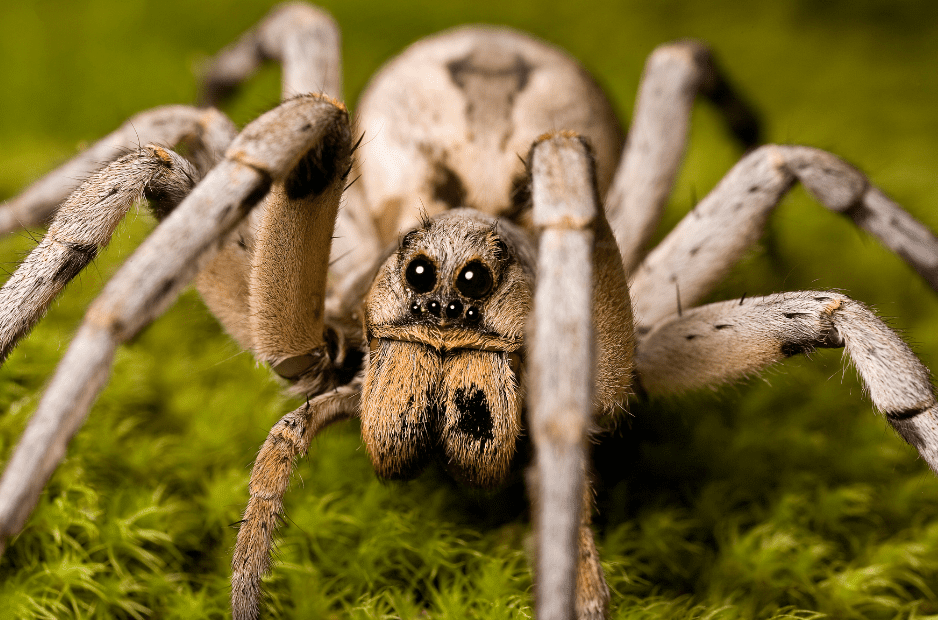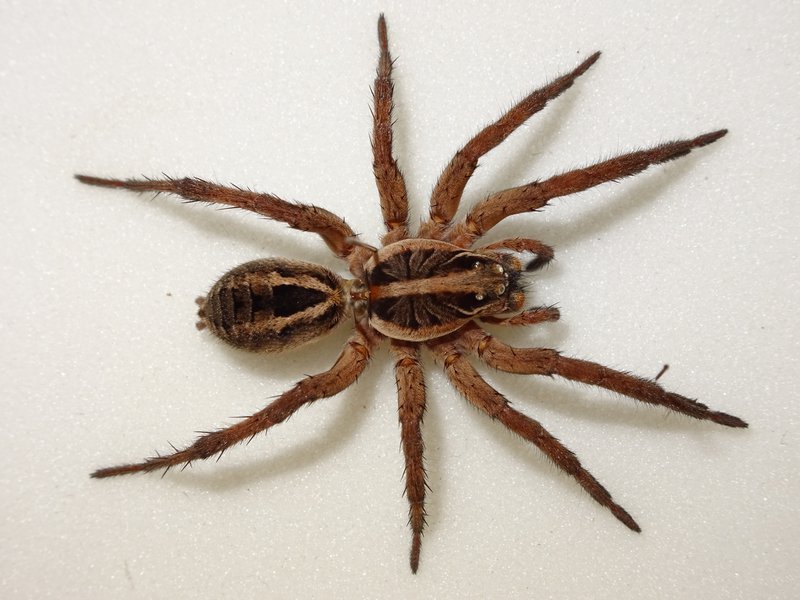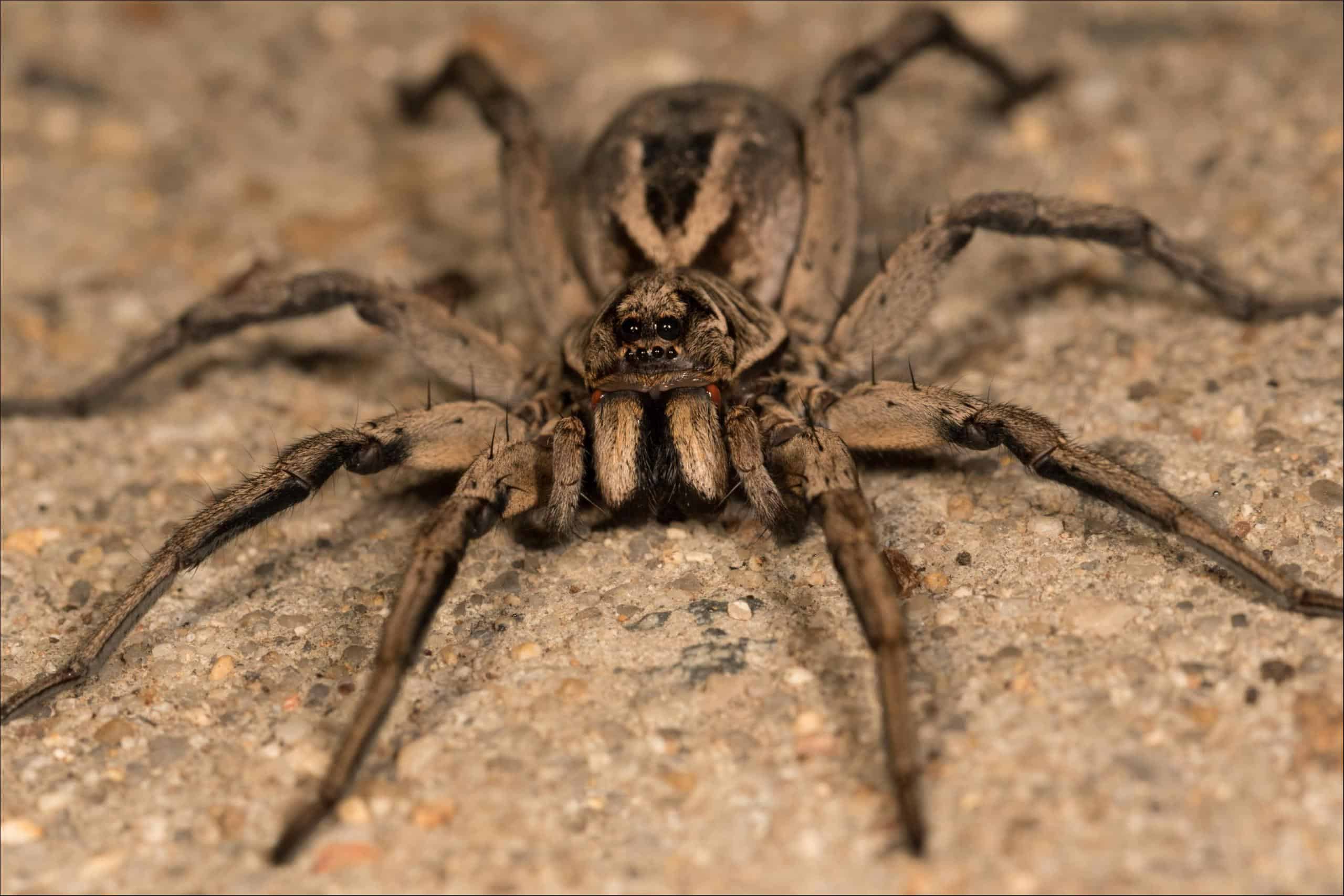Unveiling The World Of Wolf Spiders: Agile Hunters & Devoted Mothers
The wolf spider, a creature often met with a mix of fascination and fear, is one of the most recognizable and widely distributed spider species across the globe. With their impressive size, striking appearance, and intriguing behaviors, wolf spiders have carved out a unique niche in both the natural world and human imagination. These remarkable arachnids, known for their powerful hunting instincts and surprisingly tender maternal care, are far more complex than their intimidating appearance suggests. They are a testament to nature's diversity, thriving in a myriad of environments and playing a crucial role in their ecosystems.
This comprehensive guide delves deep into the world of wolf spiders, exploring their distinctive characteristics, remarkable hunting strategies, unique reproductive behaviors, and their global presence. By understanding these fascinating creatures, we can appreciate their ecological importance and dispel common misconceptions, fostering a greater respect for the often-misunderstood inhabitants of our shared planet.
Table of Contents
- The Wolf Spider: A Global Arachnid Marvel
- Unraveling Their Distinctive Features
- Apex Predators of the Insect World
- A Mother's Unwavering Devotion: Reproduction and Care
- Where Do Wolf Spiders Call Home? Diverse Habitats
- Understanding Wolf Spider Bites and Venom
- Identifying Wolf Spiders: Size and Appearance
- Predators of the Agile Hunter
The Wolf Spider: A Global Arachnid Marvel
Wolf spiders are a fascinating family of arachnids, scientifically classified under the family Lycosidae. This vast family encompasses nearly 124 genera and over 2,800 known species, showcasing an incredible diversity within this single group. They are truly global citizens, having adapted to live just about anywhere on Earth. You can find wolf spiders on every continent except Antarctica, a testament to their remarkable adaptability and resilience.
These spiders get their name from their hunting style, which is often compared to that of wolves. Unlike many other spiders that rely on intricate webs to ensnare their prey, wolf spiders are active, ground-dwelling hunters that chase or ambush their meals. They are generally characterized as mostly large, hairy, and athletic arachnids, a description that perfectly encapsulates their robust build and powerful presence in the natural world. Their physical attributes are perfectly suited for their predatory lifestyle, allowing them to navigate diverse terrains with ease and pursue their prey with impressive speed.
The sheer number of species, nearly 2,400 species of wolf spider, found all over the world, highlights their evolutionary success. From the scorching deserts to the lush rainforests, vast grasslands, and even cold, rocky mountaintops, these spiders have figured out how to thrive. Some species have even been found living in volcanic lava tubes, demonstrating an astonishing capacity to adapt to extreme environments. This wide distribution underscores their ecological importance as significant predators in various ecosystems globally.
Unraveling Their Distinctive Features
Beyond their widespread presence, wolf spiders possess a suite of unique characteristics that set them apart from many other spider species. Their physical attributes are finely tuned for their role as agile, active hunters, making them a subject of great interest for arachnologists and nature enthusiasts alike. Understanding these features is key to appreciating their efficiency and survival strategies in the wild.
Eight Eyes, Three Rows: A Hunter's Vision
One of the most striking and defining features of wolf spiders is their distinctive eye arrangement. They have eight eyes arranged in three rows, with two large ones prominently positioned in the middle. This unique configuration gives them excellent eyesight, a crucial asset for their hunting style. Unlike many web-building spiders that rely on vibrations to detect prey, wolf spiders use their superior vision to spot, track, and pounce on their targets. This keen eyesight allows them to perceive movement and depth effectively, making them highly efficient predators in their environments.
Their visual acuity is a primary reason why they are such good hunters. It enables them to navigate complex terrains, distinguish prey from background clutter, and accurately judge distances before making their decisive pounce. This visual prowess contributes significantly to their success as active predators, allowing them to react swiftly to their surroundings and capitalize on opportunities that might be missed by spiders with less developed vision.
Built for Speed, Not Webs
A hallmark characteristic of wolf spiders is their hunting methodology: they are fast, active hunters that do not spin elaborate webs to trap prey. Instead, they ruthlessly hunt down their prey much like the famous animal for which they're named. This ground-hunting strategy relies on their incredible speed, agility, and strength, rather than the passive trapping methods of many other spider families. They chase or ambush their prey, demonstrating a predatory efficiency that is truly remarkable.
Their ability to chase and pounce on insects without the aid of webs highlights their physical prowess. Wolf spiders are built for pursuit; their long, powerful legs allow for rapid movement across various surfaces. This active hunting style means they are constantly on the move, exploring their habitat for potential meals. Their athleticism is a key factor in their survival, enabling them to overpower not only bugs but sometimes even small amphibians or reptiles, especially in the case of larger species. This reliance on speed and direct confrontation makes them a formidable presence in their ecosystems.
Apex Predators of the Insect World
Wolf spiders are a family of carnivorous spiders that have adapted to most of the world’s major ecosystems. Their diet primarily consists of insects, but their impressive size and strength allow larger species to expand their prey range significantly. These spiders are essential components of their food webs, helping to control insect populations and maintain ecological balance. Their predatory nature is a defining aspect of their existence, making them significant contributors to the health of their habitats.
Larger wolf spiders, such as the Carolina wolf spider (Hogna carolinensis), which is the largest wolf spider in the U.S. and can be found all over the country despite its name, and Tigrosa helluo, are considered apex insect predators. Their considerable size gives them superior strength, speed, and a wide prey range. These formidable hunters can overpower not only various bugs but sometimes even small amphibians or reptiles, showcasing their capabilities as top-tier predators in their respective niches. Their robust build and powerful hunting instincts make them a force to be reckoned with.
In contrast, smaller wolf spiders, like Schizocosa ocreata and Pardosa milvina, are quick and elusive hunters. While they may not tackle the same large prey as their bigger relatives, their agility and speed make them highly effective at catching smaller insects. Regardless of size, all wolf spiders share the fundamental characteristic of being active hunters, relying on their physical attributes and keen senses rather than webs to secure their meals. This diverse range of sizes and hunting capabilities allows wolf spiders to occupy various predatory roles across different ecosystems.
A Mother's Unwavering Devotion: Reproduction and Care
The reproductive behaviors of wolf spiders are among their most fascinating and distinctive traits, particularly their unique approach to maternal care. The mating rituals of wolf spiders can vary depending on the species, as is true for most spider groups. Generally, adult males follow silk and chemical cues left by females, a sophisticated method of communication. Males then use a combination of visual and seismic (vibratory) behaviors to court their potential mate, a complex dance of signals designed to impress and secure a partner.
Once mating is successful, the female wolf spider creates a silk egg sac that contains up to 100 eggs. This sac is typically round, white or light gray, and, unlike most spiders, the wolf spider attaches it to the end of her abdomen, often to her spinnerets. She carries this egg sac with her wherever she goes, demonstrating an extraordinary level of maternal dedication. This constant carrying ensures the eggs are protected from predators and environmental fluctuations. The female is incredibly protective, even adjusting her body to keep the eggs warm with sunlight, showcasing an instinctual understanding of incubation.
After the baby wolf spiders hatch, they do not disperse immediately. Instead, they climb onto their mother's back, forming a dense cluster. The mother continues to carry her young for a period, providing protection and transport until they are large enough to fend for themselves. Baby wolf spiders are commonly found in the same places as adult wolf spiders—but spotting them requires a bit more patience due to their tiny size. They prefer quiet, dark, and slightly moist environments where they can safely grow and hunt, mirroring the preferences of their adult counterparts. This unique and prolonged maternal care is a defining characteristic of wolf spiders, setting them apart in the arachnid world.
Where Do Wolf Spiders Call Home? Diverse Habitats
Wolf spiders are true masters of adaptation, having figured out how to live just about anywhere on the planet. Their remarkable ability to thrive in a vast array of environments is a testament to their resilience and evolutionary success. From the arid expanses of deserts to the humid depths of rainforests, the sprawling openness of grasslands, and even the challenging conditions of cold, rocky mountaintops, these spiders have established a presence.
Beyond these more common habitats, their adaptability extends to truly unique locales. Some species have been found living in volcanic lava tubes, an environment that would be inhospitable to most other creatures. This incredible versatility underscores their capacity to exploit diverse ecological niches. Their preference for ground-level living, often among leaf litter, under rocks, or in burrows, allows them to blend seamlessly into their surroundings and ambush unsuspecting prey.
While primarily outdoor dwellers, certain species, such as the house wolf spider and black house wolf spider, are also known to live indoors. They are especially noticed in basements or garages, areas that often provide the quiet, dark, and slightly moist environments they prefer. One might come across a larger species while hiking in the southeast, with their long legs and bulky bodies making them quite noticeable. These spiders seemed to prefer the moist, boggy environment encountered during such an observation, highlighting their varied microhabitat preferences even within broader regions. This broad range of habitats, from natural wilderness to human dwellings, showcases the widespread distribution and adaptability of wolf spiders.
Understanding Wolf Spider Bites and Venom
Like many spiders, wolf spiders are venomous, a common trait amongst spiders used to immobilize their prey. This venom is a crucial tool for their hunting strategy, allowing them to quickly subdue insects and other small creatures. However, despite their intimidating appearance and the natural apprehension many people feel towards spiders, it is important to understand the nature of their venom in relation to humans.
Their venom is not particularly harmful to humans. While a bite can be painful and might cause localized symptoms such as redness, swelling, and mild pain, it is generally not considered medically significant and rarely requires professional medical attention beyond basic first aid. The effects are typically mild and transient, similar to a bee sting. This is a crucial piece of information, as the size of a wolf spider can often make it appear much more dangerous than it really is, leading to unnecessary fear.
Wolf spiders will bite if they feel threatened or provoked, but this is a rare occurrence. They are naturally more inclined to flee from humans than to confront them. Their primary defense mechanism is their speed and ability to quickly retreat into cracks, crevices, or burrows. Bites usually happen accidentally, for instance, if a spider is trapped against skin or if someone unknowingly puts their hand into a spider's hiding spot. Knowing this can help alleviate undue anxiety and promote a more informed perspective on these generally harmless arachnids.
Identifying Wolf Spiders: Size and Appearance
Identifying wolf spiders can be relatively straightforward once you know what to look for, especially given their distinctive features and common presence. The average wolf spider measures about 1/2 to 2 inches long, making them among the larger spiders commonly encountered. It's also worth noting that female wolf spiders are typically larger than males, a common characteristic in the spider world. Their robust size contributes to their athletic and formidable appearance.
These spiders are often described as big brown spiders with fuzzy bodies, a general description that helps in initial identification. They possess long legs and a bulky build, which are well-suited for their active, ground-dwelling lifestyle. The comparison to a garden wolf spider, which might have more neutral tones, suggests that their coloration can vary, but generally, they exhibit earthy browns, grays, and blacks, often with patterns that provide camouflage against the ground or leaf litter. Their hairy bodies contribute to their "fuzzy" appearance, making them distinct from smoother-bodied spiders.
Their unique eye arrangement, with two large eyes in the middle of three rows, is a definitive characteristic that can help distinguish them from other spider species. While their size and general appearance might lead to them being mistaken for other large, hairy spiders, a closer look at their eyes, coupled with their behavior (active hunting rather than web-building), can confirm their identity as a wolf spider. Understanding these key identification features can help alleviate fear and promote respectful coexistence with these fascinating arachnids.
Predators of the Agile Hunter
Despite their prowess as exceptional hunters with a hunting style similar to wolves, wolf spiders are not without their own predators. In the intricate web of nature, even the most agile and formidable hunters can become prey to other creatures higher up the food chain. While the provided data doesn't list specific predators, the very question "What are the predators of a wolf spider?" implies that they are indeed part of a larger food web where they are both predator and prey.
Their active, ground-dwelling lifestyle exposes them to a range of animals that might prey on them. Birds, larger insects, reptiles, amphibians, and even other spiders can pose a threat to wolf spiders, especially the smaller or juvenile ones. Their speed and camouflage are their primary defenses against these threats. However, their unique maternal care, where the mother carries her egg sac and then her young on her back, also serves as a protective measure, ensuring the survival of the next generation in a world full of dangers. The survival of wolf spiders, therefore, is a continuous balance between their predatory success and their ability to evade their own natural enemies, contributing to the dynamic equilibrium of their ecosystems.
Conclusion
The wolf spider, a creature often misunderstood and sometimes feared, stands as a remarkable example of nature's intricate design. From their powerful build and exceptional eyesight to their unique hunting strategies and unparalleled maternal devotion, these arachnids are truly fascinating. They are agile hunters with excellent eyesight, belonging to the family Lycosidae, and are found on every continent except Antarctica, adapting to an astonishing array of habitats. Their ability to thrive as active predators without spinning elaborate webs, coupled with their distinctive method of carrying egg sacs and young, sets them apart in the spider world.
Despite their intimidating appearance, their venom is not particularly harmful to humans, and bites are rare occurrences, as they prefer to flee rather than confront. Understanding these characteristics helps us appreciate their vital role in controlling insect populations and maintaining ecological balance. They are not just "big brown spiders with eight eyes and fuzzy bodies" but complex, intelligent creatures with intriguing behaviors that contribute significantly to the biodiversity of our planet.
We hope this comprehensive exploration has shed light on the incredible world of wolf spiders, transforming apprehension into appreciation. The next time you encounter one of these magnificent ground hunters, take a moment to observe their unique features and remember the vital role they play in our ecosystems. What unique wolf spider encounters have you had? Share your stories and insights in the comments below, or explore more of our articles to deepen your understanding of the natural world around us!

Wolf Spiders - Great Facts, Venom & Habitat Information

Wolf Spiders - The Australian Museum

Wolf Spider Insect Facts | AZ Animals